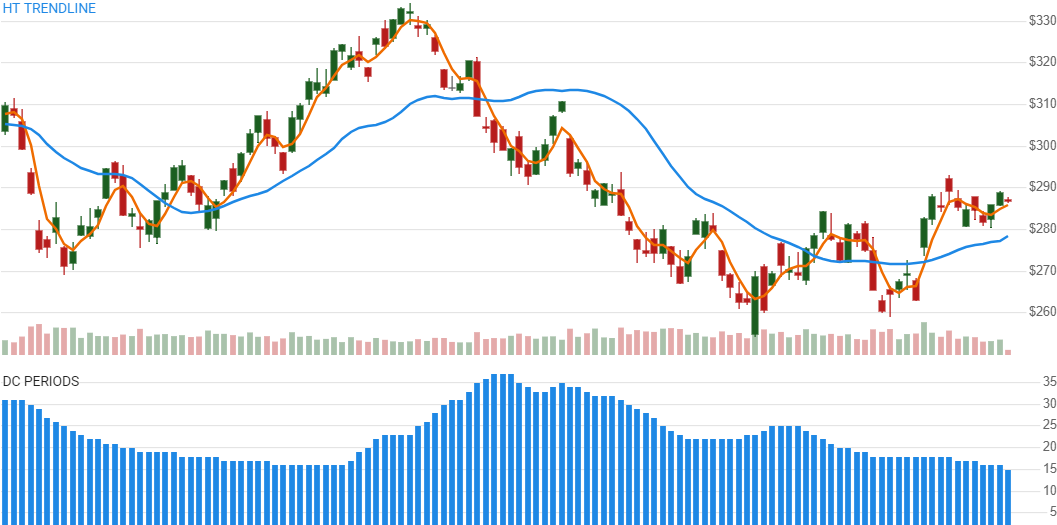Hilbert Transform Instantaneous Trendline
Created by John Ehlers, the Hilbert Transform Instantaneous Trendline is a 5-period trendline of high/low price that that uses classic electrical radio-frequency signal processing algorithms reduce noise. Dominant Cycle Periods information is also provided. [Discuss] 💬

// C# usage syntax
IEnumerable<HtlResult> results =
quotes.GetHtTrendline();
Historical quotes requirements
You must have at least 100 periods of quotes to cover the warmup and convergence periods.
quotes is a collection of generic TQuote historical price quotes. It should have a consistent frequency (day, hour, minute, etc). See the Guide for more information.
Response
IEnumerable<HtlResult>
- This method returns a time series of all available indicator values for the
quotesprovided. - It always returns the same number of elements as there are in the historical quotes.
- It does not return a single incremental indicator value.
- The first
6periods will havenullvalues forSmoothPricesince there’s not enough data to calculate. - The first
7periods will havenullvalues forDcPeriodssince there is not enough data to calculate; and are generally unreliable for the first ~25 periods.
⚞ Convergence warning: The first
100periods will have decreasing magnitude, convergence-related precision errors that can be as high as ~5% deviation in indicator values for earlier periods.
HtlResult
Date DateTime - Date from evaluated TQuote
DcPeriods int - Dominant cycle periods (smoothed)
Trendline double - HT Trendline
SmoothPrice double - Weighted moving average of (H+L)/2 price
Utilities
See Utilities and helpers for more information.
Chaining
This indicator may be generated from any chain-enabled indicator or method.
// example
var results = quotes
.Use(CandlePart.HLC3)
.GetHtTrendline(..);
Results can be further processed on Trendline with additional chain-enabled indicators.
// example
var results = quotes
.GetHtTrendline(..)
.GetRsi(..);